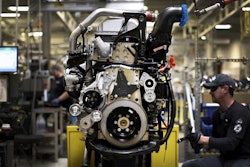Manufacturing keeps getting smarter thanks to the development and adoption of the Internet of Things (IoT). With these advances, however, comes an array of sensors and IP network infrastructure connected to legacy systems and, at times, archaic equipment, which has added a new degree of complexity unknown to manufacturing a few years ago.
Today, when a problem arises on the manufacturing floor, it’s no longer simply a matter of having an engineer on hand to fix a piece of equipment. It’s a case of determining whether a problem is mechanical in nature, a result of a software problem or related to the machine’s connection to a larger control system. The net outcome of this complexity is that there are more opportunities for things to go wrong, along with a much greater potential for unanticipated — and harder to resolve — problems.
As these difficulties arise, manufacturing organizations are experiencing internal challenges of their own. The demand for well-trained, highly skilled workers in manufacturing is higher than ever, with knowledge of not only machines, but also of digital tech and software applications. However, skilled workers with expertise in both machinery and IT are in short supply. In a recent survey, 60 percent of the 300 U.S. manufacturing executives questioned reported that they had found it difficult to hire people with the skills they need.
This means that for the foreseeable future, more and more workers in manufacturing are likely to be facing scenarios they haven’t yet been fully trained to diagnose and solve — either on the control systems side or machinery side. As a result of this skills gap, experts will likely be required to travel from off-site to manufacturing facilities to evaluate and resolve problems.
How mobile live-streaming video can enable problem resolution and improve the bottom line
While fixed cameras are often available, mobile live streaming proves to be extremely valuable because the individual on the scene can easily move around and point a camera anywhere expert eyes are needed to see “the whole picture.” For this reason mobile live-streaming video is an ideal solution for providing remote experts with the information they need when a knowledge gap exists on-site.
For example, a packaging plant, had an issue where master cartons were occasionally being under-packed prior to being sealed. Rather than have a technician from the packaging machine’s manufacturer fly out to help diagnose the problem, a facility maintenance engineer was able to use a mobile camera to stream live video to the remote tech. By doing so, the maker of the packing machine was able to determine that the issue was with the product count sensor. Once this was determined, a simple recalibration of the sensor was all that was required to solve the problem.
In this situation and others, live-streaming video offers a number of benefits to the bottom line, ranging from reducing travel costs associated with bringing in off-site experts to avoiding lost revenue due to systems downtime. Archived videos of problem resolution can also be useful in training programs to equip workers with the required skills should similar issues occur.
Taking the step toward choosing an enterprise-grade solution
To experience the full benefits of live-streaming video, manufacturing organizations need to make sure they select an “enterprise-grade” solution. For instance, while live-streaming video solutions like FaceTime and Skype have proven to be excellent options for consumers and business users who want to take advantage of live-streaming video technology, they do not adequately meet the demands of organizations where on-site workers need to communicate with remote experts or headquarters.
Neither allows signals from multiple cameras to be delivered to multiple viewing devices in a controlled fashion nor do they allow the real-time video to be archived in a secure location for review at a later date. Additionally, being broad based solutions neither has the intelligence to cope with variations in network conditions that degrade a mobile signal and compromise the video quality — conditions common to manufacturing facilities, which are often constructed as steel and concrete bunkers.
To address these issues, manufacturing organizations require a turn-key enterprise-grade video solution that provides everything needed to speed and improve remote problem solving and collaboration, including:
- Dependability – Ability to adapt the video signal to ensure that it will get through, even when network conditions are not optimal.
- Multiple Viewing Options – Video streams that can be securely viewed from any Internet-enabled device, ranging from desktop to laptop to iOS and Android tablets and smartphones.
- Flexible, centralized administration – Features allowing administrators to centrally manage camera usage policies and password-protected viewer access that are inline with the corporate needs.
- Archiving – Ability for video to be archived, with administrators having the option to download any or all of their video at any time for their own records or for future training.
- Integration – Ability to integrate in to existing back-office CRM systems, call-center systems and legacy support systems for seamless incorporation into the business workflow resulting in minimal disruption to the business.
- Ease of Use – An enterprise-grade solution is only effective if workers want to use it. The ability for workers to access live-streaming video should be as easy as turning on a flashlight to shed light on the problem.
As strides in mobile technology are made, it’s becoming possible for anyone on the manufacturing floor with a mobile device to live-stream what they’re seeing to experts who can help with problem resolution in real time. Those who adopt will reap the benefits of cost savings, faster problem resolution, increased collaboration and more, while those who don’t will continue to face the same challenges as before.
Romulus Pereira is CEO and Founder of Vidcie.
To read more manufacturing and technology news, sign up for our newsletter. You can also follow Manufacturing Business Technology on Twitter @MBTwebsite.
ENTRIES OPEN: Establish your company as a technology leader. For 50 years, the R&D 100 Awards, widely recognized as the “Oscars of Invention,” have showcased products of technological significance. Learn more.





















